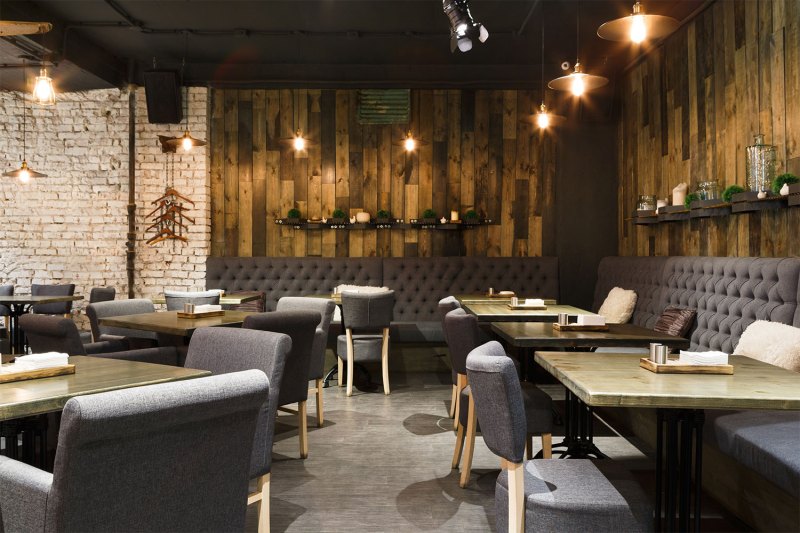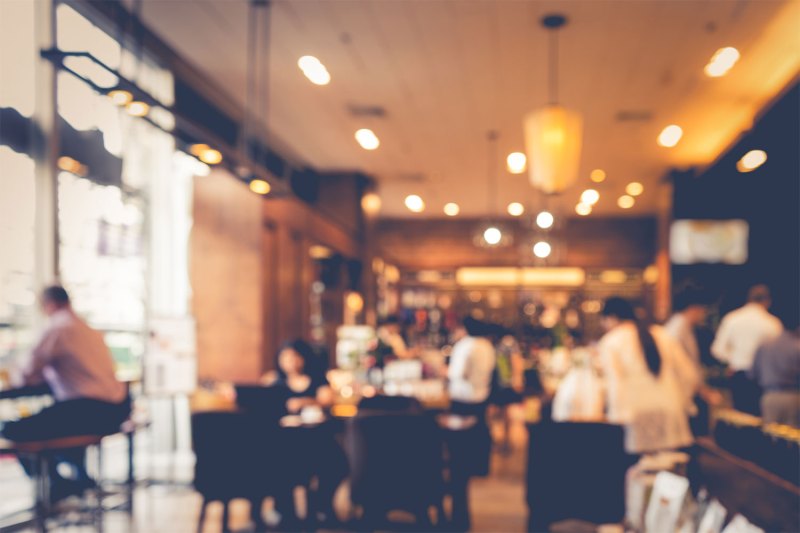Now that a large number of states have “reopened” their business landscapes, restaurateurs, and retailers must contend with the reality of resuming operations while still observing the social distancing guidelines necessary to keep their staff and their clientele as safe as possible during this transitional time. But when we’re talking about restaurant dining, which relies enormously on guest volume and close proximity, social distancing presents a unique set of challenges.
Restaurants located in already-reopened states are doing a lot of on-their-feet problem solving right now, while eateries in still-closed areas seek to formulate new operational standards to put in place as soon as they’re back to full service. “Social distancing will affect the restaurant industry like it will affect many other in-person businesses [such as] retail,” internationally renowned chef and restaurateur Akira Back tells us, insisting that “safety of both employees and customers will be the number one priority [for restaurants].” But what exactly will restaurant social distancing look like? Read on to find out how social distancing practices will be implemented, how it will impact these businesses’ bottom lines, and which new standards will become indelible parts of the dining experience for years to come.
Even in cities and states that currently allow restaurants to reopen, many restaurateurs are waiting for guidance from medical professionals and the CDC.
At the end of the day, the final decision of whether or not to reopen a restaurant post-shutdown lies with individual owners. Some restaurateurs in areas that permit restaurants to resume full service are still choosing to hold off until the medical community and organizations like the CDC give a clearer safety endorsement, including chef/owner Joey Ward of Southern Belle and Georgia Boy in Atlanta. “We are looking for medical professionals to say it’s okay to start opening dining rooms. Our initial plan, once the CDC declares it safe to reopen, is to minimize the amount of people in the dining room. We plan to open up Southern Belle for reservations and continue to offer takeout as well. Once it’s completely clear and safe, we will reopen [both] Southern Belle and Georgia Boy,” explains Ward.

Restaurants must drastically rethink their reservation policies.
Restaurant reservation systems typically aim to maximize revenue while also maintaining service standards and guest comfort. In the post-shutdown era, however, restaurateurs will need to consider their spatial limitations more carefully than ever before, and their reservation books will have to adjust and evolve accordingly.
Chef/owner Risa Magid Boyer, whose New Jersey restaurant Vanillamore focuses on shareable plates and communal dining experiences, has a strategy for arranging her restaurant’s future reservations in a way that will provide guests with an enjoyable dining experience while also preventing overcrowding: “[When we reopen,] We will have multi-course tasting menus and post schedules for public seatings on our website. Diners must reserve in advance so that we can have a reduced seating capacity to prevent crowding and maintain sufficient distance around diners. Guests will [also] be pre-paying for their meals.”
Owner Vip Manchanda of Gran Morsi in New York City anticipates a need to limit party sizes when his restaurant opens again, and he plans to make some changes to his restaurant’s layout and its reservation capacity: “In order to implement social distancing guidelines, we’ll be spacing out our dining room tables 6-8 feet apart, as well as transforming our lower-level private events space into a separate dining room. That way, we’ll be able to utilize two separate floors with plenty of distance between tables. Upon reopening, we anticipate that the city will temporarily suspend large party seatings, so we’ll likely accommodate up to 4 guests per table. While we have two full service bars, for now we’ll eliminate bar seating and instead turn both bars into service bars.”
Servers will, by necessity, spend less time at tables than they did in the past.
Prior to the COVID-caused shutdowns, most full-service restaurants featured a staff of servers who regularly visited their tables to take orders, to drop off dishes and drinks, and to make sure that the guests enjoyed their experiences. But now, servers will need to reduce their time at (and proximity to) tables, both for their own safety and for the safety of their guests. In order to keep the dining format flowing smoothly, CEO and President Fred Castellucci of Castellucci Hospitality Group in Atlanta chose to implement a policy that requires “less server contact overall. [Guests and staff will use] a system for requesting service. [Unless a guest makes a service request,] we won’t go to the tables.”
Restaurant owners and managers can make use of ordering apps and summoning systems to allow customers to place their orders, but these policies will undoubtedly have a negative effect on the earning potential of servers and other FOH employees. Also, a lack of direct connection between servers and guests could result in compromised hospitality standards, according to general manager James Alford of Foxcroft Wine Co. in Greenville, South Carolina:
“One of my biggest concerns moving forward is how social distancing will affect hospitality and service, which are clearly integral parts of our industry. We pride ourselves on the culture we create inside Foxcroft Wine Co., and we know that’s something our guests expect when they come in. When we’re all staying six feet apart and our managers are enforcing social distancing guidelines, that will likely impact the level of comfort our guests feel when they visit. We will absolutely do our part to follow all guidelines and keep everyone as safe as possible, but there’s no denying that it will change the restaurant dining experience for the foreseeable future.”

Outdoor seating will become more important than ever.
With the summer season fast approaching, many restaurateurs find themselves looking to outdoor seating as a viable option for upholding social distancing requirements while still welcoming guests for on-site dining, with many cities considering laws that would expand sidewalk dining spaces to accommodate hungry and stir-crazy residents. Director of food & beverage Matt Dowling of Hilton Norfolk The Main in Norfolk, Virginia sees patio seating as an integral element to getting his business back up and running, telling us that “now that our state is moving into Phase 1 of reopening, we are allowed to offer outdoor dining at 50% capacity. We are fortunate to have two restaurants on property, Grain and Saltine, with spacious patios, so we can continue to serve our guests while practicing safe social distancing.”
Co-owner Nick Presti of Canopy Road Cafe in Jacksonville, FL also views outdoor seating as a business necessity nowadays, with both the usual seasonal affinity for outside tables and the comparative ease of outdoor social distancing playing important roles. “We are realizing how critical outside seating is and that in any and all future operations and expansions, we are going to look at outside covered patio seating as an essential need. From what we have found, folks seem fine sitting inside following the social distancing protocols, but people really seem to enjoy outside dining as an option. If the trend continues, we will be interested to see if it’s more due to feelings of safety or the nice weather,” Presti explains.
Many restaurants will heavily focus their efforts on delivery and takeout.
The dining room closures caused by the pandemic led numerous restaurants to channel their efforts into takeout and delivery operations, even if they hadn’t offered these options in the past. In anticipation of the continued popularity of takeout, some restaurants are fully leaning into this business model, opting for redesigns that will make it easier to provide their products to excited customers. For instance, owner Debbie Sharpe of The Goddess and Grocer in Chicago says that “at our main store in Chicago’s Bucktown neighborhood, we started by opening the front window and serving through that space, with our staff wearing protective gear. The neighborhood has taken to it so well that we are actually going to put in a proper slide window to continue to service guests from a distance.”
Also a believer in the takeout window model, co-owner Sarah Nelson of Bobby’s BBQ in Fountain Inn, South Carolina tells The Manual that “we are also doing a complete renovation to add a takeout/to-go window so people can order outside (or online) and pick up their food without coming in the building at all.”
In order to stay afloat during this time of change, restaurateurs must think creatively … but even that won’t prevent difficult financial situations.
Even as stay-at-home orders lapse and restaurants begin to reopen their dining rooms and patio spaces, the incredible burdens forced upon the hospitality industry by this pandemic can’t be underestimated. Founder/CEO Elizabeth Blau of Blau + Associates in Las Vegas clearly explains the hard reality facing restaurants all across the country:
“Getting creative with financial models, operating hours, and nonessential spending, looking for free marketing opportunities, asking for further breaks from vendors … restaurants are doing all this and more. However, whether your state has mandated 25% or 50% reduced capacity for restaurants, it is financially untenable to continue in this way. We aren’t paying 25% of our rent or insurance, and we certainly can’t and won’t tell our chefs or managers that we are going to pay them 25% [of their salaries]. In an industry where margins are already extremely low, this is simply unmanageable. We understand it is necessary to protect our staff and our guests and are committed to it. However, restaurants will face financial ruin beyond a week or two without additional financial aid from the government and other tax relief.”
The bottom line? The government needs to step up and provide real assistance and relief to restaurants, lest we risk hobbling an industry that defines cities and communities and elevates both local economies and local pride.



